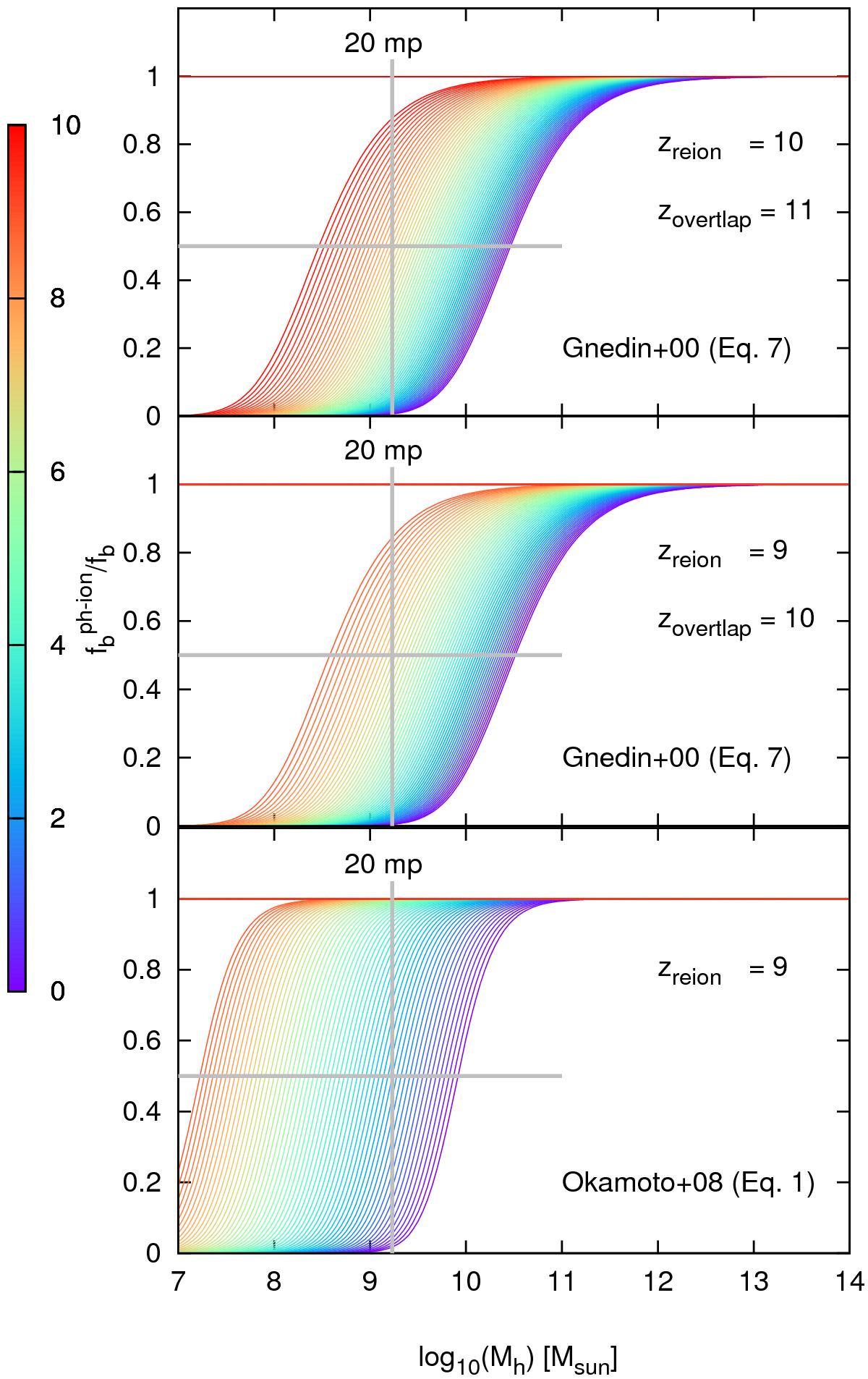Fig. 1

Normalized baryonic fraction ![]() as a function of the dark matter halo mass. The colour code shows the redshift evolution (from z = 10 in red, to z = 0 in purple). We compare two different prescriptions for the evolution of the baryonic fraction after the redshift of reionization. The two upper panels are made using the Gnedin (2000) prescription with two different reionization redshifts (zreion =10 and 9). The bottom panel shows the Okamoto et al. (2008) prescription with zreion =9. The grey vertical line indicates our dark-matter mass resolution limits (20 dm-particles). In the Gnedin (2000) model (central panel) the strong effects induced by photoionization (
as a function of the dark matter halo mass. The colour code shows the redshift evolution (from z = 10 in red, to z = 0 in purple). We compare two different prescriptions for the evolution of the baryonic fraction after the redshift of reionization. The two upper panels are made using the Gnedin (2000) prescription with two different reionization redshifts (zreion =10 and 9). The bottom panel shows the Okamoto et al. (2008) prescription with zreion =9. The grey vertical line indicates our dark-matter mass resolution limits (20 dm-particles). In the Gnedin (2000) model (central panel) the strong effects induced by photoionization (![]() ) appear at z ≃ 7−8 and become stronger with decreasing redshift. In the Okamoto et al. (2008) prescription, the impact of photoionization comes much later (z< 1) and cannot affect the galaxy formation processes at high z.
) appear at z ≃ 7−8 and become stronger with decreasing redshift. In the Okamoto et al. (2008) prescription, the impact of photoionization comes much later (z< 1) and cannot affect the galaxy formation processes at high z.
Current usage metrics show cumulative count of Article Views (full-text article views including HTML views, PDF and ePub downloads, according to the available data) and Abstracts Views on Vision4Press platform.
Data correspond to usage on the plateform after 2015. The current usage metrics is available 48-96 hours after online publication and is updated daily on week days.
Initial download of the metrics may take a while.


